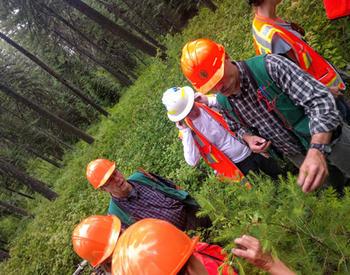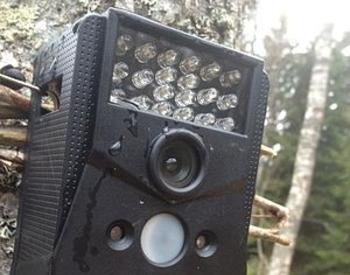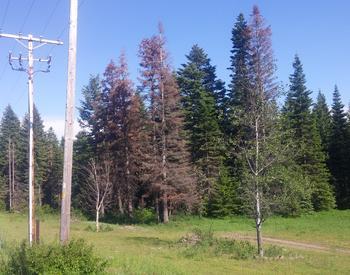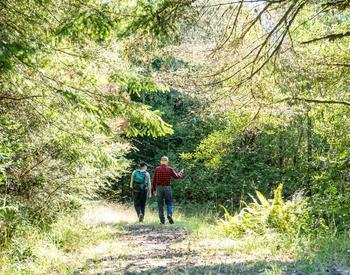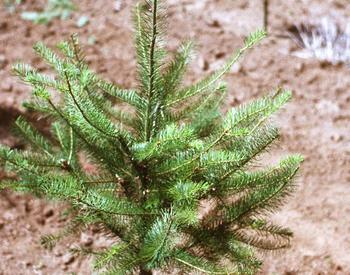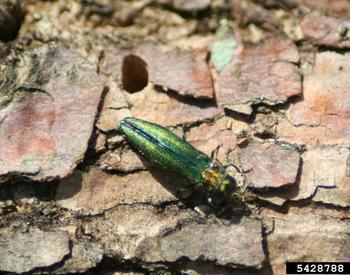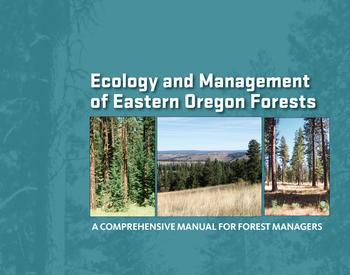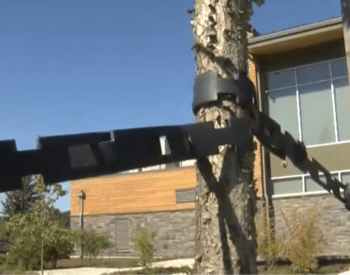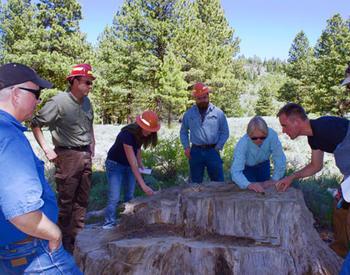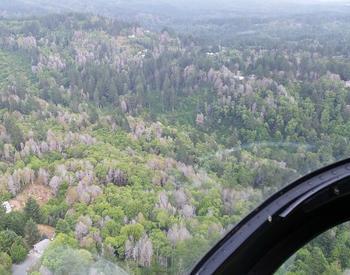Douglas-firs usually do not tolerate extreme drought conditions well. The effects of the very low moisture are often clear to see in the following drought years:
- Crowns are thin.
- Tops and branches have died because the roots they depend on did not get water.
- Large trees may have died.
- Insects and canker fungi have settled on weakened portions of trees, girdling branches and stems.
The list below is the most common insects in a drought-stressed or dead Douglas-fir.
Douglas-fir twig weevils (Cylindrocopturnus furnissi) and other twig beetles. These kill twigs and small branches.
Douglas-fir engraver beetles (Scolytus unispinosus). These kill patches of cambium on the stem. This may cause branch or top kill.
Roundheaded wood borers infest the branch collar area and main bole, typically of trees that are dead or dying. The larvae of roundheaded and other wood-boring beetles are often seen tunneling in logs or firewood. Except for the flatheaded fir borer, wood boring beetles are not a major threat to standing trees.
Flatheaded wood borers (Buprestids), of which the flatheaded fir borer (Melanophila drummondi) causes the most damage. It infests the whole tree, or the top, or individual branches and has caused the major part of recent large-tree death. Flatheaded fir borer infestations often involve groups of trees in pockets that may expand from year to year when conditions are right for the insect.
Trees infested by flatheaded fir borers often show much evidence of woodpecker feeding. Adults fly from May to September. It may be worthwhile to use stocking control and other vigor-improving treatments on high-risk sites to reduce the flatheaded fir borer’s damage.
Douglas-fir beetles (Dendroctonus pseudotsugae) can kill large-diameter trees (8" diameter or greater). Douglas-fir beetles have an earlier flight schedule. Adults emerge and find new host material as early as April at lower elevations or after mild winters. Douglas-fir beetles prefer weakened or recently downed trees. You can reduce the damage by keeping tree vigor strong and Douglas-fir blowdown to less than four 10-inch diameter (or larger) Douglas-fir trees per acre. The Douglas-fir beetle is most often found following extensive blowdown of mature trees. This is seldom an issue at lower elevations (below 3,000 feet) in interior southwest Oregon.
Several canker-causing fungi, including Diaporthe lokoyae and Phomo spp., can infect and kill stems and branches of drought-stressed Douglas-fir. These fungi are weak pathogens that cause little, if any, damage to vigorous trees. Canker disease usually increases after drier than normal weather and decreases during periods of normal or above-normal rainfall.



